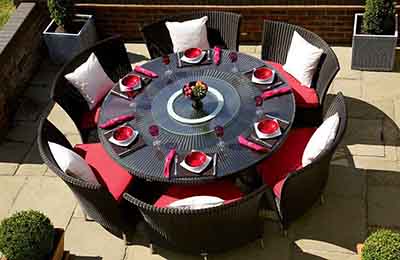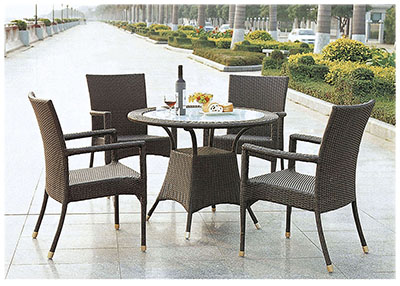The concept of shift (moirage)
The optical phenomenon discovered by French scholar Moore in the 18th century.
It is a visible pattern produced when objects and lines continuously interfere at a certain angle at a certain frequency.
When the human eye cannot distinguish between objects and small lines, only the results of interference patterns can be seen. The so-called four-color printing (consecutive tone) is simply a complete movement of a non-neutral tone point of a certain area.
The black part is a collection of some big points. The bright part is that the small points gather together more vaguely.
On the one hand, in screen printing, silk screens and dots can induce yet another shifting phenomenon, providing yet another pattern.
For a screen pattern, the distribution of dot patterns prints prints that are completely unreadable, or another print that is significantly different from the original print.
The basic reason for this
Interference with two or more four-color printing
Four-color printing and screen interference
Printed fiber knots during fiber printing
The characteristics of the current screen printing are that in order to achieve dot printing, special dot screens, other screen materials, other template technologies, various ink forms, and specially designed screen printing machines are required. Combining these elements organically is the key to successful dot printing.
If some of these elements are used inappropriately, the result of shifting will increase. In general, pad printing occurs when more than two regular patterns are stacked together at an inappropriate angle. In screen printing dot printing, the following reasons can be generally seen.
Silk screen stretch dot screen stencil printing material
Screen Selection & Stretching
Thicker screens are more prone to blocking the flow of ink than paddles.
The greater the tensile force of the screen, the better the precision of the printing and the better the ink penetration. Therefore, when performing four-color printing,
You should use a low-stretch force screen.
The screen with low stretching force can usually be stretched to 30N/m. If the extension value exceeds this value, the thickness of the wire will be relatively thickened, so that the ink drop effect is deteriorated or the printing phenomenon is deepened.
Flat uniform stretch
Pneumatic stretching device is the best equipment that can fully meet the needs of the work. If using such tools for multicolor printing, uniform stretching can be achieved by simply adjusting the pressure gauges of the four screens. In the event that a four-color printing template is replicated on a very small screen, part of the image will be printed on a non-straight line. Because of this irregularity will cause part of the printing phenomenon, but all the images on the screen are fully stretched, there will be no printing.
Four-color screen printing requires equipment to have good performance, so the frame should use a solid metal structure, in addition to the screen should also have a balanced tensile force. Therefore, it is necessary to use a tensile tester.
The more different the horizontal and vertical elongation of the screen is, the more serious the printing phenomenon will be. This must be noticed.
In addition, in the printing process, sometimes the dot gain or the image enlargement is encountered, which is due to the insufficient tension of the screen.
Once the screen has problems with the tension adjustment and the tension is not the same on every screen, it is easy to print. If pad printing occurs at one place in the print, you will experience some loss or point occurrence. So be sure to give the screen proper tension
Grasp the angle
There is a danger of the formation of pad printing on the screens and screens.
0° and 9° (±5°): parallel to the mesh of the screen, the number of dots in the system is often related to the area of ​​the yellow dots, because yellow is not a strong color, so the influence of the printing is recognized by the naked eye. It will be very laborious.
45° (±5°): At this angle, the screen has a symmetrical construction, so it has a decisive effect on the printing. For example, if the magenta dot is 45°, you can feel that there will be pad printing, then the screen will form an angle of 7° on the frame. In contrast to strong colors, if you become a 45° dot (ink or cyan), be sure to use them together. In screens with a large number of lines, strong colors produce pad printing at 15° and 75°. In this case, the screen angle should be set to 22°
- Color 15° = Wire Mesh - 7° (Counterclockwise)
- Color 75° = Screen + 7° (clockwise)
If there is no exception, if the difference between the angle of the dot and the angle of the screen line is 22°, the result of pad printing will be produced. At this time, you should exchange 2 frames. (color 15° + screen 7°, color 75° + screen 7°)
If printing is not lost anyway, it is necessary to convert the number of screen lines or screens. Before making the stencil, in order to know the influence of printing, place the affixed film on the glass plate, and light source from below. If the printing screen frame is placed parallel to the surface of the screen and the pad printing occurs, the printing frame is not affected by the pad printing. Should look to the left and right. At this time, in order to select the desired screen angle, special attention should be paid to the absence of pad printing.
Appropriate angle adjustments are made for the pad printing effect generated between the screen lines constituting the individual color image. Colors that are as deep as cyan, magenta, and black are usually maintained at 30° each other. This is to minimize the visible pad printing image due to the interaction of the screen ruled lines. A very bright color like yellow can start at 15° from the black color. When screen printing, the yellow pigment can only be placed in the vertical side position because the pad printing phenomenon generated by the template is barely noticeable.
The dominant color black is more likely to cause pad printing.
The four-color printing screen is stretched with the same screen, and all the four frames should have the same tension.
Printing materials
The stencil depends on the photosensitive stencil (Direct Stencil): The amount of sensitized adhesive should be as thin as possible. In order to obtain a uniform thickness of the sensitized adhesive, eliminate the occurrence of uneven thickness of the sensitized adhesive layer, and then apply the screen after intermediate drying. , will significantly reduce the occurrence of printing phenomenon.
Direct Stencil (Capillary Diaphragm) Relying on Diaphragm and Water: This type of template has the same soft surface (material) as the indirect method and is most suitable for dot printing.
Thickness of the stencil: 4-color dot printing If a thick stencil is used for printing, very thick printing should be performed according to the thickness of the ink. Especially in the shadows, the influence of pad printing can be reduced.
Image Angle: If the angle of the portrait axis is automatically installed on the template, it will not be affected by the angle of the printed material on the screen printer. As the size of the network frame changes, the method of avoiding the influence of pad printing is also limited.
print
In the printing process, it is sometimes seen that printing occurs. Too thin or thick ink is the cause of pad printing. When the ink invades the bottom of the stencil or in the case of dots, partial printing results are produced.
material
If a regular image appears on the surface of the printed material, the influence of pad printing will increase. In order to avoid the influence of this printing, a variety of transparent mesh screens should be placed on the printed material so that it can find the parts that are not affected by the printing while rotating left and right, and select the size and angle of the corresponding dots.
other
The current screen printing technology is not yet possible to avoid printing. Printing will happen unexpectedly or it may not happen for a long time. Even if any conditions have not changed, it may suddenly appear.
Source: China CD Forum
Round Patio Dining Set is very convenience for guest host in your home or big party in the garden.We offers generous proportions for ultra-comfortable round patio dining. The gently curved chair backs and dining tables are crafted from woven white polyethylene (HDPE) resin fibers. Sturdy powder-coated aluminum frames are concealed from sight. Dining tables are topped with tempered glass.
· RUST-FREE ALUMINUM FRAME
· ALL-WEATHER HANDWOVEN WICKER
· HIGH UV RESISTANT WICKER
· EASY TO CLEANAND CARE
· 100% WATERPROOF FABRIC
· 2 YEAR WARRANTY
Round Patio dining set has many options and size, You can choose different size and color to decorate your dining and garden.
-polyethylene rattan: it's non-toxic and safe for the environment. It's also antimicrobial, a quality that prohibits the growth of fungus and mildew. The wicker won't splinter or rot in extreme temperatures (-94°F to 176°F), making our furniture an excellent choice for almost any climate.


About us:
1.our factory is more than 20000 square meter big.
2. Our showroom is about 800 square meters.
3. we have professional sale team and more than 200 workers.
4. The capacity of our factory is 60 containers/month.
5. we attended CIFF furniture fair and canton fair.
Welcome your further inquiry for further discussion, also welcome to visit our factory to talk face to face.
Round Patio Dining Set,Rattan Round Dining Set,Wicker Round Dining Set,Garden Round Dining Set
Golden Eagle Outdoor Furniture Co., LTD. , https://www.geleisurefurnitures.com